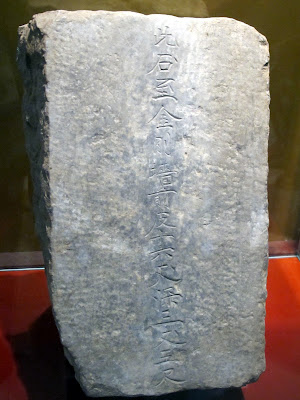This is the best preserved tomb area with the most emperors buried. As indicated by the name - here lie the mausoleums fof thirteen emperors of the Ming Dynasty.
Emperors were exceptionally rich, so the mausoleums were widespread so don't imagine walking from one to the next. Only three were open to public, Changling Tomb (長陵), Dingling Tomb (定陵) and Zhaoling (昭陵) Tomb.
I still don't quite comprehend as to the different names, one emperor had his given name, then the name when he became an emperor, and now the tomb has a different reference.
Anyway, Changling Tomb was the mausoleum for the third Emperor of Ming Dynasty, Emperor Zhu Di and his Empress Xu. It is the largest and best preserved among all the tombs.
Dingling Tomb is the mausoleum of Emperor Zhu Yizhun, the 13th emperor with his two empresses. The highlight of this tomb is the stone Underground Palace. When Emperor Zhu Yizhun ascended the throne, he took the name Emperor Wanli (萬曆). His temple name was Míng Shénzōng (明神宗)
Long story short, Emperor Wanli was not interested in state affair, he indulged himself in a life of luxury and extravagant spending of the empire's coffers.
The last one open to the public is Zhaoling Tomb, where the 12th emperor, Emperor Zhu Zaihou and his three empresses were buried.
Most would probably combine a tour with Badaling Great Wall but since we went to Mutianyu, we visited this Ming Tomb the next day. Out of the three, we went to Dingling Tomb, as it has an underground palace, compared to the other two.
 |
| Memorial stele carried on the back of the traditional tortoise shaped animal |
 |
| Lingxingmen - Double Pillar Gate |
Edit: Sis said the purpose of saying, ""我回来了 (I've come back)" is in case we leave our spirits there.
 |
| Sacrificial stone vessels with Soul Tower in the background |
See the Soul Tower (明楼) at the background? It was a symbolic structure of the mausoleum. A sacred stele was erected inside the tower.
 |
| Click to see larger, it is not a very clear inscription |
At the top of the stele, engraved two characters "Da Ming" which mean Great Ming, the remaining engraved characters on the surface are "the Mausoleum of Emperor Shenzong" (Emperor Shenzong is Emperor Wanli aka Emperor Zhu Yizhun's temple name)
There was a security check before entering the tomb itself. I took very few photos, in particular none of the coffin, but here's a couple of the very few.
 |
| The Emperor's throne |
 |
| Diamond wall entrance |
 |
| Marble door |
On the center of this tablet, engraved with 16 Chinese characters literally meaning, "From this stone to the front of the Diamond Wall, it is 16 zhang long and 3 zhang and 5 chi deep." The Diamond Wall was the entrance to the Underground Palace.
Apparently the initial workers forgot to remove this Direction Tablet when the tomb was sealed. The archeologist followed the direction on this tablet and found Dingling Tomb. This tablet is no longer at it's original location but moved to one of the Exhibition Hall as a display.
We took bus no 872 to Dingling from Deshengmen (德胜门). If you end up taking a public bus from Deshengmen, do check out the grilled lamb shop near the train station. It was absolutely delicious, wish I am eating one now!
 |
| RMB 3 for one or RMB 5 for 2 |
 |
| Totally delish |
Side note: Cold weather making me feel like eating and sleeping all the time = ="


2 comments
I want to try that grilled lamb too! ;)
ReplyDeleteat least you can make do with some satay first :P
Delete